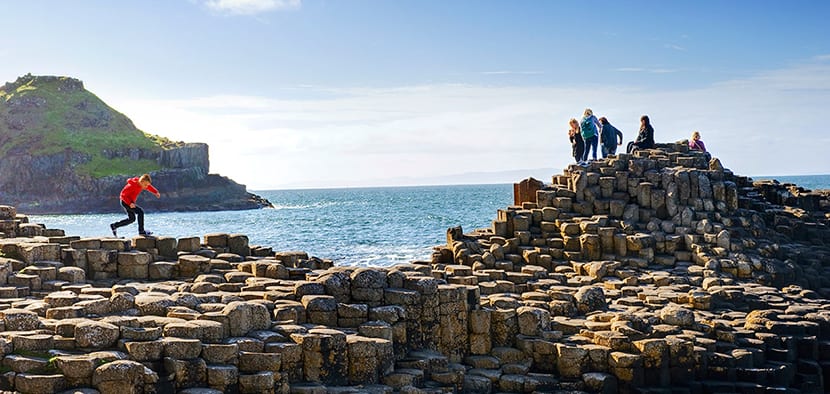
We said a few days ago that Ireland owns wonderful countries and today we have another of these tourist postcards that attract visitors: the Giants Causeway. But this time it is not in the Republic of Ireland but in North Ireland, the part of the island still controlled by the UK.
The Irish coast continues to give us dreams in rock and water and that is the Giant's Causeway or the Giant's Causeway, such his name in English. It is a very handy place and if you plan to go to the Emerald Isle you cannot stop getting to know it.
The Giants' Causeway
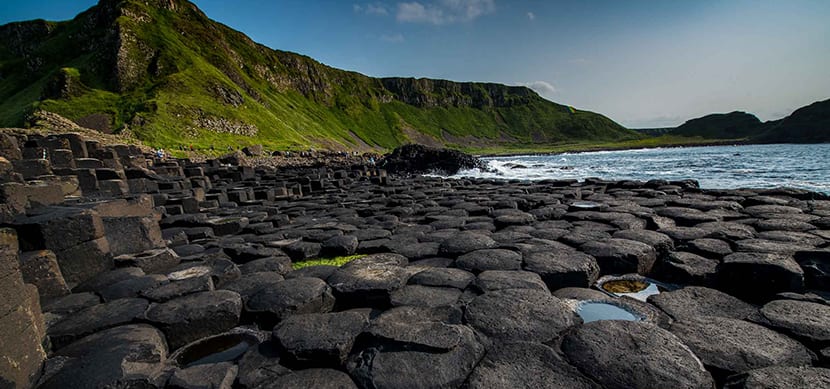
It is located in the current county antrim and according to geologists it was formed between 50 and 60 million years ago during the Paleocene Period. At that time there was volcanic activity and here is the origin of the rocks: the fluids of molten basalt poured through terrains of soft, white, chalk-like rock and formed extensive surfaces of lava. The lava cooled and contracted and fractured in a manner similar to when mud dries and fractures.
Thus was born that particular form of horizontal pillars with ends convex below and concave above that is so eye-catching. The thickness of the pillars apparently has to do with the speed with which the lava cooled. It is better to know all this before stopping or walking on them, so we will appreciate them more.
How to go to the Giant's Causeway
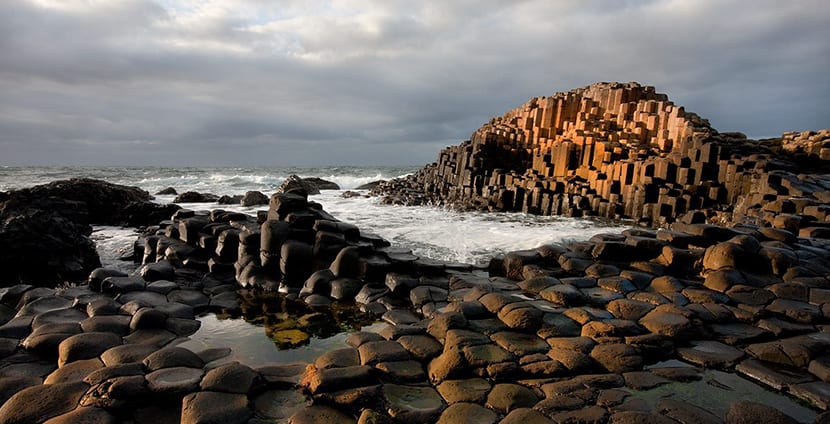
You can get by car or bus. Both the Calzada and the current Visitor Center are located on the B147 road, just three kilometers from the village of Bushmills, 11 miles from Coleraine and 12 from Ballycastle. There are parking lots so you can leave your car.
As well, between the Calzada and Bushmills there is a bus service that between March and October operates on a regular basis and only takes 20 minutes. If you are going to choose the train You should know that you can take it in Belfast or Londonderry but you must get off at Coleraine and then connect via bus (the Ulsterbus Service 172). If yours is the hiking or biking there are also great routes to do.
La Causeway Coast Way, for example, travel miles of beautiful coastline.
Visit the Giant's Causeway
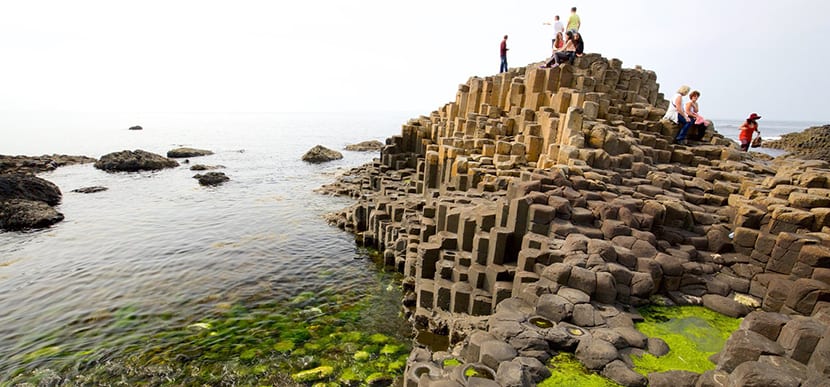
Currently the price is £ 10 per adult (online price). The standard price there is £ 11 so if you want to save a bit online shopping is better. The place opens in January from 9 am to 5 pm, February and March closes one hour later, April, May and June at 7 pm, July and August at 9 pm, September closes again at 7 pm, October closes at 6 pm and November and December closes at 5 pm.
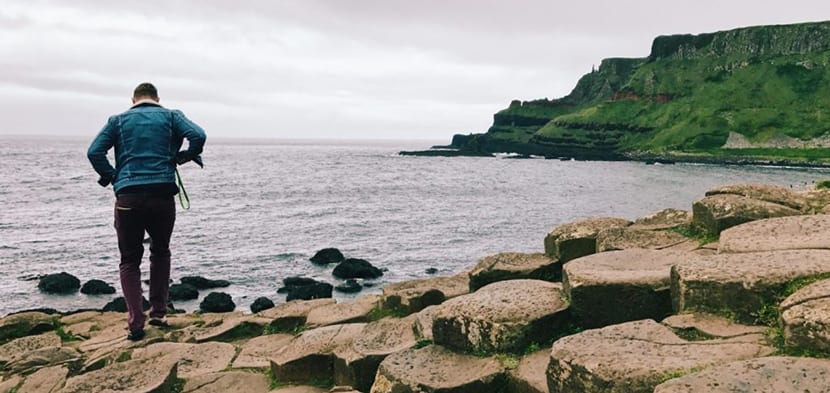
The ticket ensures access to the Visitor Center, the use of the external audio guide and an orientation pamphlet, but the bus between the Visitor Center and the Causeway itself has an extra cost. However, there are two ways to approach to the coast and its gigantic causeway: one is direct from the road and another is on foot.
From the road, where the bus leaves you, there is less than a kilometer away and if not you have a circular walk that follows the path of the cliffs to Shepherd's Steps and back to the road which is 3 kilometers long.
The most famous postcard, that wall of columns that look like pipes of an organ, is known precisely as the Organ, they are reached by a lower path that is taken both from the road itself and from Shepherd's Steps. Along this path you will see the Eyes of the Giant, round reddish holes, made of iron in the rock. The path is narrow but runs three and a half kilometers.
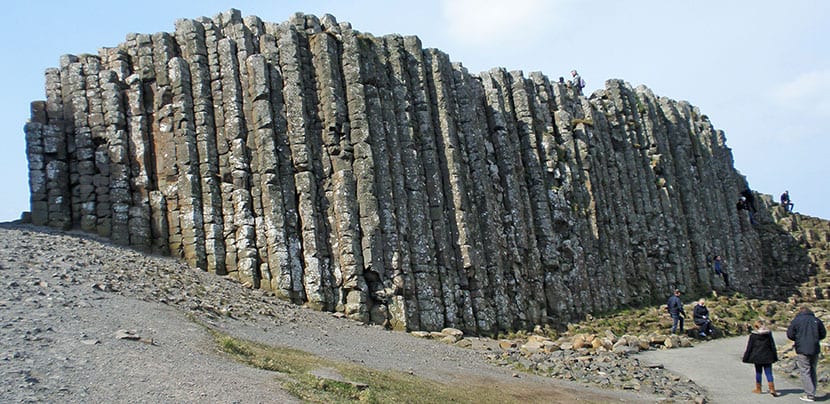
There is also the call Runkerry Circuit, a path that follows the route along the top of the cliff, passes the Causeway Hotel and the Runkerry House. The views are great, you see Donegal and even Portrush, and the drive back drops you at the Visitor Center gates. The road is first paved but later it is made of grass or dirt and travels about 4 kilometers.
La Dunseverick Castle trail It is another of the possible walks around here. You take it at the end of the small parking lot just behind the larger Visitor Center parking lots. Here the Causeway Coast trail follows an old tramway that ran until 1949. The route crosses an iron bridge and climbs the hill to Portballintrae for a total of two kilometers.
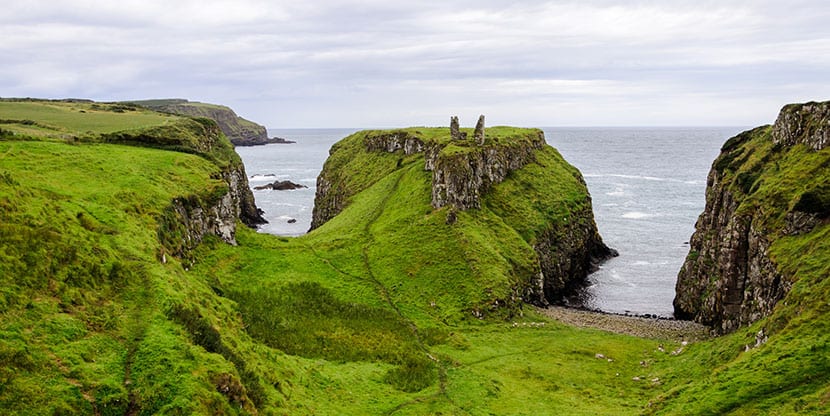
Finally there is the Portallintrae old tram trail in itself one of the longest trails to the top of the cliff. It is narrow and slippery but the views that are provided are worth seeing. It arrives at Dunseverick Castle and then drops you at the foot of the Visitor Center. In total almost 13 kilometers. These are all the walks that the coastal area of the Giant's Causeway offers.
The important thing, regardless of the route you choose to take, is that you do not stop knowing the Most popular rock formations: The Harp, The Organ, Camel's Hump and Chimmey Stacks.
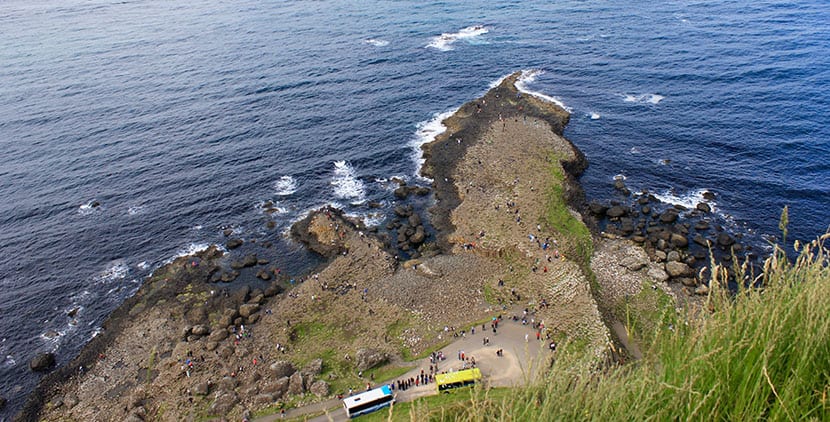
Meanwhile the Visitor Center is the heart of the park: a structure of glass walls and basalt columns, of efficient consumption and modern design. There are many exhibition rooms inside and from the roof, covered with grass, you have a 360º view of the Giant's Causeway.
It is the place where you will hear both the reality and the myth of this road: the geological reality and the myth about the two giants: the good of Finn MacCool and Benandonner, your bad neighbor from scotland. One fine day they decided to build a road that could cross the sea to meet and measure forces.
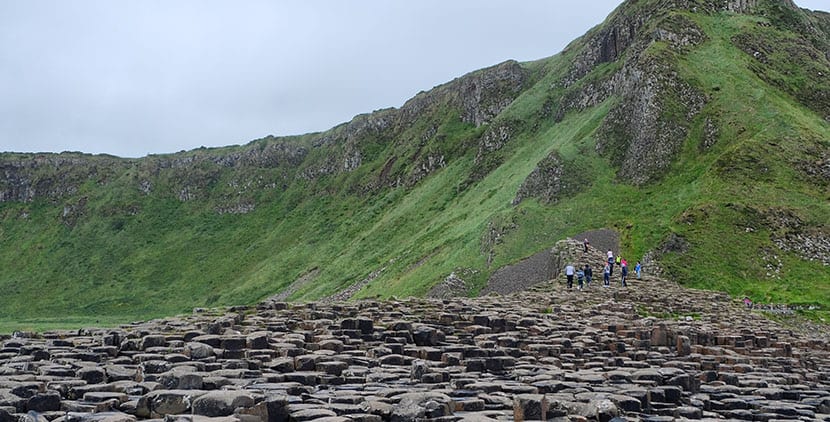
Finn did his part but it was so hard that he fell asleep. His wife found him but before she could wake him she heard Benandonner arrive and saw him really big so she hid her husband behind a cape and a hat. The Scotsman called him but the wife, very clever, asked him to lower his voice or he would wake up the sleeping child. Thus, Benandonner thought that if the child was large, the father must be truly gigantic ... What did he do? For he went back to Scotland and destroyed the causeway after him.